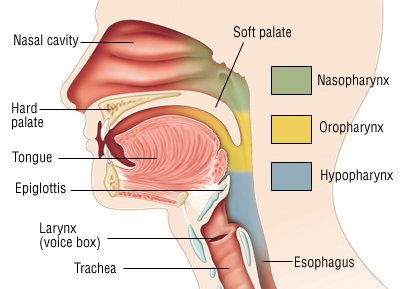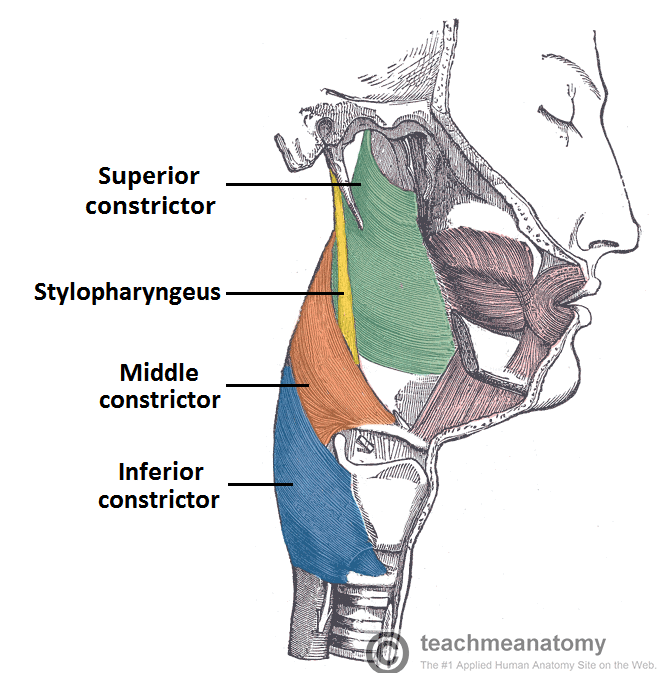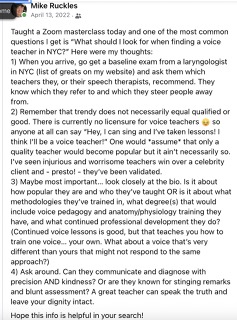There’s a large club of theatre singers who work hard, sing well, have solid storytelling skills, and yet regularly deliver forgettable, boring, and tedious auditions that yield no call backs and no traction.
I myself have been a card carrying member of this club —
I took a class with a director I’d auditioned for in NYC once. I hadn’t booked any shows he was directing, but I’d heard his class was helpful.
After a few weeks of work and adjustments, he said to me, “I didn’t see any of this depth and potential when you auditioned for me. Not one inking of it.”
And he was right because I was doing this one thing that regularly shoots theatre singers in the character shoe.
What if there was one shift you could make that could fundamentally change everything about how you show up in an audition room, on camera, in the rehearsal hall, on the stage, and even in your life and relationships?
And what if this shift was very simple and something you can practice anywhere?
And what if this shift meant that you can guarantee yourself a satisfying, embodied, and integrated experience whether you’re in an audition room or at rehearsal or on the stage?
While you cannot control the outcome of what the table people decide, this shift will help you become so joyful about the things you can control that I’ll bet you a fro yo that you’ll also see changes in the results you’re getting from auditions.
This tool also shifts how you interact in the world and makes the experience of your life sweeter, more present, and helps you relate in a wholehearted way.
This journey starts with the one and only Betty Lynn Buckley.
I did scene study and song interpretation with her in New York City over the course of 3 years. If you don’t know her work, give her a quick google, and you’ll see she’s a master of theatre singing.
One thing about her class that confused, drew, mystified, frustrated, and taught me was meditation.
We meditated. A lot.
I was suspicious about how this was going to help me snag a leading role in an original Broadway cast, but the seeds she planted during those years grew into some of the strongest trees in my technique forest.
Meditation taught me to be an observer, a witness, and to look at things differently than I ever had before.
The reason I took Betty’s class was because the few times I’d seen her perform, I noticed the whole atmosphere in the theatre changed when she sang. And I wanted to be able to create an experience like that.
Betty said something over and over, and it made zero sense to my 24-year-old brain. “Be the seer,” she’d say. “Be the observer.”
I see just fine, thank you very much. You’re telling me that seeing something is going to help me get a callback for Urinetown?
I was a basic mess in Betty’s class. I did some good work, and other days I’d stand in front of class and sob and not know why I was crying. (I’d tell my students now that was important work, too.) She stood with me through all of it.
And it was this lesson: to be the seer that created a superpower in me as a singer and as a human who wants to share and live a vibrant, wholehearted, connected life.
But, what was it about Betty’s admonition that created such a shift?
Well, it was quantum mechanics.
Of course.
What’s your first expectation when you walk into a singing class? Naturally, it’s to discuss the dual wave/particle nature of reality.
If you do a quick google on the Double Slit Experiment, you’ll find out how this process led to the birth of quantum mechanics.
I’ll spare you my attempt to explain, but the nutshell is this — scientists learned that light could behave either as a wave or as a particle depending on how it was being observed.
A photon beam was aimed at 2 slits in a metal sheet and created wave patterns after passing through.
Scientists were like, hmmmm that’s curious. Shouldn’t it behave like a particle?
So they set up a camera to see what was going on as light passed through the openings.
Once the cameras were operational, the light changed its behavior, and it made a pattern that showed the behavior of a particle rather than the behavior of a wave.
The mere change of adding an observer, a camera, caused the wave to collapse into a particle.
This is the power of the observer.
You’ve experienced this power in your own life.
Have you ever had a teacher who formed an opinion or assumption about you the moment they met you and the energy of that point of view completely shaped your relationship with them?
You can feel the power of an authority figure’s belief about you in your very cells.
If you had that little league coach who yelled at you all the time because they BELIEVED in you, while you may not have wanted to do those extra laps and pushups, the fact that someone saw great potential in you planted something substantial in your guts that told you you had what it took to play good defense or get around for that third pirouette.
I’ll say that again — in this series of experiments, light changed its behavior based on being observed. Looking at it changed it.
I remember hearing Betty say that in class, and my mind simply didn’t accept it.
A thing’s a thing, and how could it change just because you looked at it?
I still don’t know how that happens, but my experience has shown me that it’s true.
When I believe in a student and call out the possibilities I see, one day they turn around and notice they’re singing with a balanced, organized voice while living a specific story with an open heart. It even surprises me when I see it all come together — I’m like, dang, these tools work! Even though I know they work. There’s wonder about it, still.
This information — how you see things — is crucial for you as a singer and storyteller because you can actually determine not only how you’re looking at things, but you can also shift your actual vantage point.
And this piece of intel is crucial.
And this is what Betty meant when she said “Be the seer. Not the seen.”
The question for you to ask is — are you seeing the world from behind your own eyeballs? Are you cozy and rooted into your own soul looking out at and relating to the world and folks around you?
OR have you hovered your consciousness somewhere outside yourself like a self-critical drone and begun to observe yourself from the outside?
You can feel the energetic shift in someone when this happens.
If I’m here hunkered down in my own body and looking out to you with an open heart, that feels a certain way.
And if I float out of myself and look back at me wondering what you’re thinking, or was this shirt a good choice for today, or what do you think about my singing, acting choices, and how can I get you to like me? Oof, that’s a very uncomfy place to be in my experience.
And we all go there. Humans, it seems, are the only sentient beings capable of this self consciousness particle collapse.
So, that’s question one to ask yourself.
Am I looking and seeing from behind my own eyeballs? Or am I somewhere outside shooting scrutiny lasers at myself?
Becoming aware of where your consciousness may have located itself is indeed step one. And this is something you can start to ask yourself anywhere.
An exchange with a cashier or barista is a great time to practice. Compliment their glasses or commiserate about the weather. What does it feel like to relate to another human without wondering if your shoes were a good choice?
Also notice what it feels like when you start to leave the center of you.
This happens a lot when we predict the future. If there’s a thing coming up when people will be looking at us — like an audition — we often pre-game it and imagine how it’s going to go.
But, notice where your imagination centers itself. Is it focused on your experience from inside your body? Or are you playing out how you may be perceived by the folks there?
I spent countless days in the latter zone. Still do. Even as I communicate this to you, my brain wants to ask “How’m I doing? How are you seeing me now?”
And yes, you definitely want to read the room. The way people respond to you is key information.
Now the question is, “Ok, so I get the whole where am I looking from thing and why it’s important, but how do I change it?”
And the good news is it’s just like singing — you can practice.
If you feel a kind of gut crunch or contraction, if your mind starts to run through scenarios and wheedle plans to manage how folks perceive you, you’ve sent the attack copters out.
On your next breath, you can bring yourself back into yourself.
Try it. Let your air out first. Now breathe through your nose and let yourself come back in behind your eyeballs.
Notice things in your environment and name them to yourself. Wall, doorknob, window, tree, bench, stoplight.
And when you fly out again, you can return on your next breath.
You’ll also notice a feature of self-consciousness is that it shuts down your breathing. So when you get it going again, it’s easier to move yourself back home.
When you’re singing a song, you may notice, oh whoops, I’ve floated over to behind the table people, and I don’t like this.
Tell yourself, on the next breath, I can come back.
And it may take three of four breaths, but you can come back to you. It’s the ability to fix the bike while you’re riding it — a phrase I learned from my spiritual director.
Anytime you’re moving from A to B, there will be things that don’t go to plan, so on the next breath you get to decide again. That’s how you move through a song, too.
So, it’s becoming aware of where your point of view is — are you grounded in your own skeleton looking out to your world, or are you zooming around to figure out how you’re being perceived?
Hint — you can never really know, and the good news is most folks aren’t thinking about you. They’re thinking about themselves. Just like you are. So that can be some very liberating information.
On your next breath you can come back home.
Now you’re probably like — all this sounds very self-realized and like a generally more pleasant way to walk down the street, but will this have real effects in the audition room? If I get behind my eyeballs, am I going to book those jobs???
I would bet you a frozen yogurt that if you cultivate this awareness and working from your identity as the seer, you’re going to see a shift in your results. You have to.
There are unlimited factors about auditioning that you have absolutely no control over. You cannot control what direction of the table folk. Stop trying to crack the code. There’s no code. Not like that.
But, if you’ve ever had the privilege of sitting behind an audition table, you will see this difference immediately.
When a human walks into the room, and they human from inside themselves and relate to you heart to heart, your own heart opens and says, “Oh thank God. Thank you for being a fellow human person.” It’s spring water on a hot day and a cozy blanket in grey winter.
That energetic exchange is life giving, and that actor made the table person’s day better just by relating in this way.
The director I took the class from that time? The one who told me he saw nothing about the depth and breadth of my talent? The reason I disappeared in the room was because I was desperate for a director-y person to say, “You know what? You’re really talented! I think you’re good!”
That’s not their job.
Their job is to cast a show, and your job is to bring excellent work into the room, and you’ll do excellent work with satisfaction when you commit to seeing.
The way you might be seen from the imaginary outside of you is not your business. It’s not controllable, and there’s no way for you to even form an accurate assessment.
And if you can, please get behind an audition table somewhere. Be a reader or monitor or get coffee for folks.
You’ll see this immediately. You’ll see there’ll be folks who come in, sing real pretty, do a nice job, and you just can’t make yourself care.
For a number of reasons, their attention is not hunkered into their experience of a specific story, and their energetic focus blurs.
You may hear directors and casting give the note, “That’s too general — I need specifics.”
General is a self-consciousness defense.
“You know what your decision is, which is not to decide.” Because a decision has to come from your own guts and your own point of view and from SEEING things clearly.
If you’re too occupied perceiving yourself from an unreal outside, there’s no way you have the mental and heart capacity to see and PLAY with possibilities in the story. And you’ll be like I was with that director — blurry and invisible.
So, my answer to — will this shift in focus, will being the seer help me get more jobs? I can’t imagine a world in which this won’t help.
Most importantly, can you imagine how much more content and satisfying your life will be living from this place?
You can practice all the time. And when you feel contracted, anxious, you notice your breathing stopped, you can come back inside on the next breath or three.
I always say that singing and storytelling is about opening your heart and inviting folks inside. Remember — you cannot invite someone in if you’re not there.
Now, CAVEAT!
Before you go about your singing aggressively looking outward into the mid-distance checking on every breath if you’re truly inside your body, remember in our human experience we look a lot of places. I look at the outside world, and I look into my internal world.
I even have regular moments of self consciousness, and that, too, is a human thing you can share.
What if every time you noticed you were feeling self-conscious while sharing a song you remembered, “Every person within earshot knows exactly what this feels like.”?
You can then invite them IN to that reality with you. You don’t need to resist it. Acknowledge it as the protector it’s trying to be, and then invite in.
And to give you even more clarity on how to do this, here’s a video from a series I made for you, and this will give you a super simple fix for how your eyeballs can help you, number one, feel like a human, and, number two, enliven your experience of any story you’re singing about. See you over there.
And please remember there is only one you and somebody needs to hear the story only you can sing.
Love Much,
Dan




